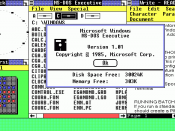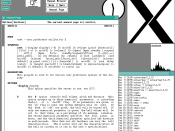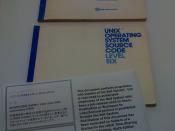Similarities and differences � PAGE \* Arabic �2�
POS/420 - Similarities and differences of two network schemas
�
One similarity between UNIX and Windows is the way the file system is broken down. With UNIX, files are separated according to ordinary files, directories, special files, and pipes. Windows has a similar breakdown except that the files are named metafiles (system files), files or streams, and directories. The ordinary files in UNIX are the files that users work with and contain user information. The corresponding files in Windows with ordinary files are files or streams. The directories in UNIX and Windows serve the same purpose, which is to hold other files and directories. The pipe in UNIX is similar to temporary folders in Windows. Another similarity between the two operating systems is that they both allow blanks in filenames. However, it is not common to use blanks in UNIX for filenames since they are so confusing.
A third similarity between UNIX and Windows is that they both support file compression. Windows has built-in support for file compression via NTFS while UNIX supports file compression through the use of gzip. UNIX also has another utility called gunzip, which is used for file expansion.
There are several differences between the two operating systems that set them apart from one another. The first is that Windows uses a backslash to separate directory names while UNIX uses a forward slash for directory names. Another difference is that UNIX must assign permissions by owner or group for executable files while Windows assigns file extensions, such as ".exe" or ".com". A third difference between the operating systems, which is very noticeable, is that alphabetical letters are assigned to devices such as hard disks or floppy disks while UNIX mounts the device to a directory. What this...


